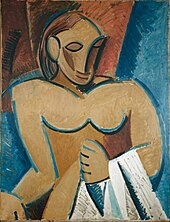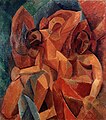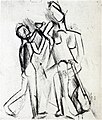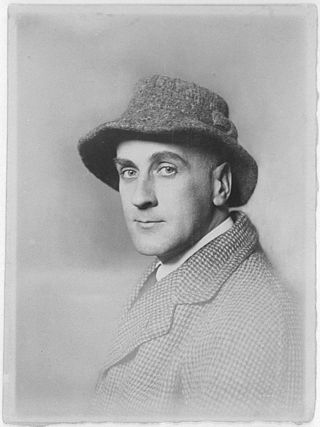Pablo Picasso, 1908,
L'amitié (Friendship, Two Nudes), oil on canvas, 151.3 x 101.8 cm,
Hermitage Museum Pablo Picasso, 1908, Trois femmes (Three Women), oil on canvas, 200 x 185 cm, Hermitage Museum, Saint Petersburg
Pablo Picasso, 1908, Paysage aux deux figures (Landscape with Two Figures), oil on canvas, 60 x 73 cm, Musée Picasso, Paris
Pablo Picasso, 1908-09, Poissons et bouteilles, oil on canvas, 73.5 x 60 cm, Lille Métropole Museum of Modern, Contemporary and Outsider Art
Pablo Picasso, 1908, Bols et flacons (Pitcher and Bowls), oil on canvas, 66 x 50.5 cm, Hermitage Museum, Saint Petersburg, Russia
Pablo Picasso, 1909, Nature morte à la brioche
Pablo Picasso, 1909, Maisons à Horta (Houses on the Hill, Horta de Ebro), oil on canvas, 65 x 81 cm, private collection
Pablo Picasso, 1909, The Oil Mill (Moulin à huile), oil on canvas, 38.1 x 45.7 cm (15 x 18 in), Metropolitan Museum of Art
Pablo Picasso, 1909, Still Life, Casket, Cup, Apples and Glass, Bologna Gallery of Modern Art
Pablo Picasso, 1909, Brick Factory at Tortosa (Briqueterie à Tortosa, L'Usine, Factory at Horta de Ebro), oil on canvas. 50.7 x 60.2 cm, (Source entry State Museum of New Western Art, Moscow) Hermitage Museum, Saint Petersburg
Pablo Picasso, 1909, Man with Arms Crossed, watercolor, gouache and charcoal on paper pasted on cardboard, 65.2 x 49.2 cm, Hermitage Museum, St. Petersburg
Pablo Picasso, 1909, Two Nude Figures (Deux figures nues), steel-faced drypoint on Arches laid paper, 13 x 11 cm, printed by Delâtre, Paris, published by Daniel-Henry Kahnweiler
Pablo Picasso, 1909, Nature morte au compotier (Still Life with Fruit Dish), drypoint
Pablo Picasso, 1909, Harlequin (L'arlequin)
Pablo Picasso, 1909, Femme à l'éventail (Woman with a Fan), oil on canvas, 101 x 81 cm, Pushkin Museum, Moscow
Pablo Picasso, 1909,
Buste de femme (Femme en vert, Femme assise), oil on canvas, 100.3 x 81.3 cm,
Van Abbemuseum, Netherlands. This painting from the collection of Wilhelm Uhde was confiscated by the French state and sold at the Hôtel Drouot in 1921
Pablo Picasso, 1909, Head of a Woman (Tête de femme), oil on canvas, 60.3 x 51.1 cm, The Art Institute of Chicago
Pablo Picasso, Head of a Woman, 1909, gouache on paper, 62.2 x 48 cm, Museum of Modern Art, New York
Pablo Picasso, 1909, Woman with a Mandolin (Femme à la mandoline), oil on canvas, 92 x 73 cm, Hermitage Museum
Pablo Picasso, 1909,
Femme assise (
Sitzende Frau), oil on canvas, 100 x 80 cm,
Staatliche Museen zu Berlin, Neue Nationalgalerie
Pablo Picasso, 1909-10, Figure dans un Fauteuil (Seated Nude, Femme nue assise), oil on canvas, 92.1 x 73 cm, Tate Modern, London. This painting from the collection of Wilhelm Uhde was confiscated by the French state and sold at the Hôtel Drouot in 1921
Pablo Picasso, 1909-10, Le Bock, oil on canvas, 81 x 65.5, Lille Métropole Museum of Modern, Contemporary and Outsider Art
Pablo Picasso, 1910,
Woman with Mustard Pot (La Femme au pot de moutarde) , oil on canvas, 73 x 60 cm, Gemeentemuseum Den Haag. Exhibited at the Armory Show, New York, Chicago, Boston 1913
Pablo Picasso, c.1910, Studentin, photo Kahnweiler, Paris
Pablo Picasso, 1910, Girl with a Mandolin (Fanny Tellier), oil on canvas, 100.3 x 73.6 cm, Museum of Modern Art, New York
Pablo Picasso, 1910, Portrait of Wilhelm Uhde, oil on canvas, 81 x 60 cm, Joseph Pulitzer Collection
























































































